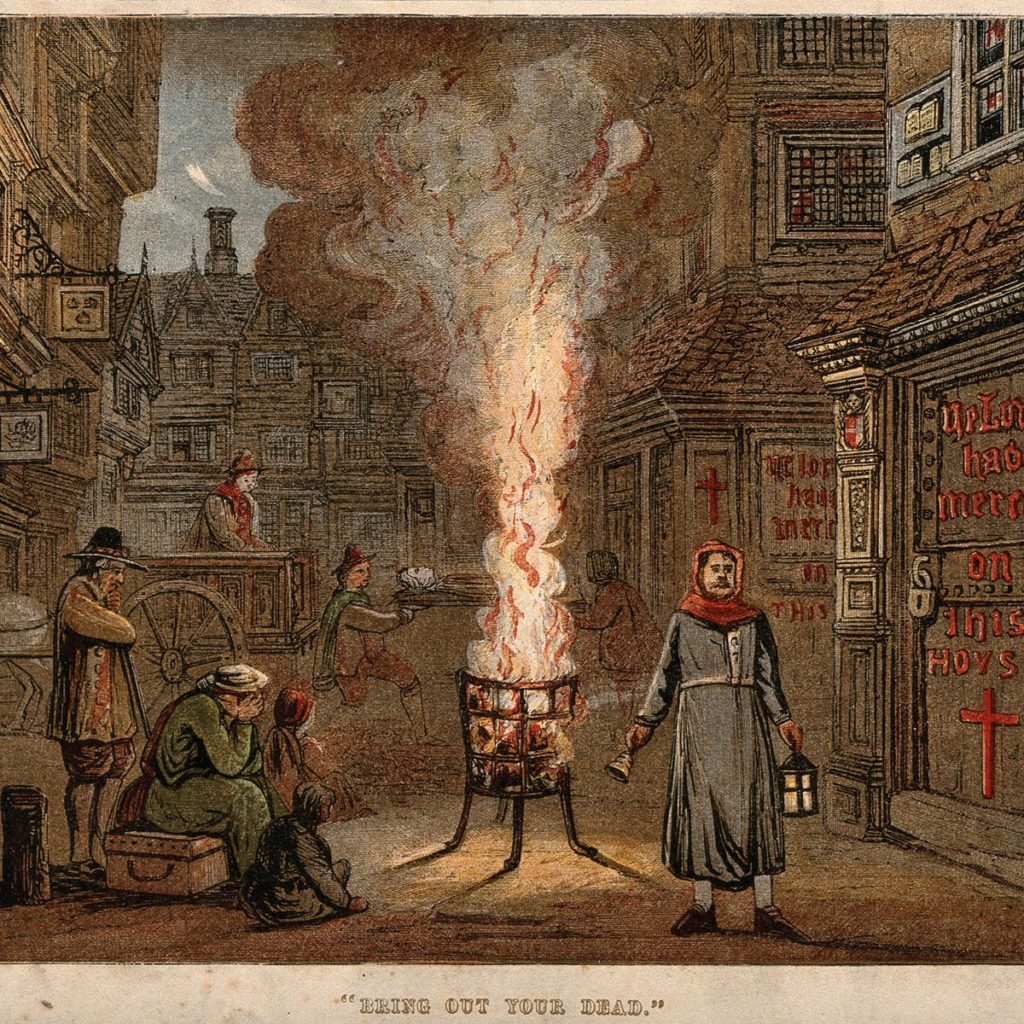
During the summer of 1665, London experienced the last outbreak of the bubonic plague which carried away about 100,000 lives, i.e. one fifth of the entire city population. Extracts from the diary of Samuel Pepys, a naval administrator, provide us with a valuable testimony of the eyewitness of this horrible calamity. In spite of quick spread of the incurable disease of unknown origin, London society demonstrates certain resilience to its ravages. The author of the diary himself takes everyday risks moving from one district of the city to another, visiting different places outside London, meeting numerous officials and common people; the thought to temporary stop his activities does not even come to his mind. And we can guess that his counterparts behave in exactly the same way. That’s why the city is frightened by the plague but not paralyzed by it.
Our extract from Samuel Pepys’s diary starts on the 24th of May 1665, when people in the coffee-house begin to discuss remedies against the growing plague, but to no avail. Very hot weather recorded on the 7th of June, definitely, contributes to quick spread of the disease. The infected houses are marked “with a red cross upon the door” and the inscription “Lord have mercy upon us!” But the author does not mention who is responsible for such markings the dwellers or some official authorities. It is interesting to read that tobacco’s smell and taste are considered as the prophylaxis against the plague. The death strikes indiscriminately rich and poor (Sir John Lawson and the coachman). Those who have means leave the city, shops and businesses are closing, even at the Royal Exchange the activity is relatively low. Burial grounds in the church-yards become subject of speculations. Newly devised remedies such as “the plague-water” become the best gift for Londoners. On the 26th of July, the sickness reaches the parish where Pepys lives and he starts to put in order all his affairs. Under the 27th of July is mentioned for the first time the weekly bill of mortality showing sharp rise of deaths of the plague. It means that municipal authorities are still capable to record burials and try to count all casualties of plague. Thanks to such statistics, Londoners can evaluate the situation and make appropriate decisions. By the 10th of August, the number of plague victims attains 3000 in a week and Pepys decides to dispatch the final version of his Will as quickly as possible. The necessity to isolate sick people seems clear to everyone even the Lord Mayor defends to inhabitants to leave their houses after 9 PM providing an opportunity to those who are ill to go out and take fresh air. The Royal Court leaves London for Wilton. By the 13th of August, Pepys finalizes all preparations to his possible death and continues his normal activities. On the 31st of August, weekly count of the plague casualties cited in the Bill reaches 6,000 but people fear that the true number is above 10,000. The epidemic attains its peak during the first week of September (6,978 victims) but from the 14th of September the death-toll starts to decrease. Immediately, The Royal Exchange fills with people. Pepys certainly feels saddened and depressed by the tragic loss of his friends and servants but economic and political life of London goes on and long-term mourning is out of question.
In such a way, the Great Plague of 1665 lasts slightly more than four months and in spite of considerable casualties does not paralyze completely the business life of the British capital. As usual, poor and dependent groups of population suffer much more than wealthy and influential ones. In the second half of the seventeenth century Englishmen could not afford to stop their economic and political activities for even a short period of time because they were in acute competition with their Dutch, French and other European rivals.
Bibliography:
Warrington, John.(editor) The Diary of Samuel Pepys, 3 vol. London, J.M. Dent and Sons, 1953.